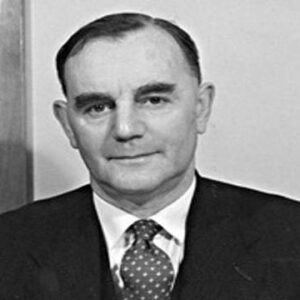Cecil Frank Powell was an English scientist who won the Physics Nobel in 1950. He invented the nuclear photography method. He discovered the subatomic particle pion (pi-meson). Powell came from a family of gunsmiths, but it didn’t stop him from following his dreams. He received scholarships to study at top universities. Powell’s appreciation for education and the arts began in childhood. Throughout his long and fruitful career, he conducted numerous studies and received numerous prizes and distinctions.
Early Childhood of C. F. Powell
Cecil Powell was born in Tonbridge, Kent, England. His father, Frank Powell, was a long-time neighborhood gunsmith. Powell’s grandfather, George Bisacre, had built a private school in Southborough.
At eleven, he got a scholarship to Tonbridge’s Judd School. This was a major jump after receiving his elementary education locally. Powell went on to receive an open scholarship to Sidney Sussex College.
Powell joined C.T.R Wilson and Lord Rutherford’s Cavendish Laboratory in 1927, after graduating with First Class Honors in Natural Science Tripos. Here he studied condensation and received a Ph.D. in Physics.
A Career of C. F. Powell
The year 1928 marked the start of his professional career. When he came to Bristol, he began working as a research assistant for A.M. Tyndall in the H.H. Wills Physical Laboratory.
He was a lecturer and reader at Bristol University. Seismologist, he went to the West Indies in 1936 to explore volcanic activity.
Powell became the Melville Wills Professor of Physics in 1948.
He also directed a European mission that flew high-altitude balloons over Sardinia and the Po Valley (1954, 1955, and 1957).
Grandiose of C. F. Powell
Cecil Powell spent his life developing ways for monitoring positive ion mobility in order to characterize ions in common gases.
He also built a Cockcroft generator to accelerate protons and deuterons. They were used with a Wilson Chamber to explore neutron-proton scattering.
He later developed technologies that used specialized photographic emulsions to record the paths of elementary particles. Powell used this method to analyze cosmic radiation in 1938, exposing photographic plates at high altitude. In collaboration with Giuseppe Occhialini, H. Muirhead, and young Brazilian physicist César Lattes, he discovered Pion (Pi-meson), antipion () in 1949, and the modes of decay of kaons (K-mesons).
He also helped organize the groundbreaking Pugwash Conference on Science and World Affairs in 1955. He often chaired the Pugwash Continuing Committee sessions in place of Bertrand Russell. On the committee until 1968.
Honors & Awards
Powell was elected to the Royal Society in 1949 and received the Hughes Medal.In 1950, he was given the Nobel Prize for Physics, his life’s greatest accolade.
Powell joined the World Federation of Scientific Workers in 1955. He signed the Russell-Einstein Manifesto, written by Bertrand Russell, Albert Einstein, and Joseph Rotbla.
Powell won the Royal Medal in 1961 and the Lomonosov Gold Medal from the USSR Academy of Sciences.
Personal Legacy of C. F. Powell
In 1932 he married Isobel Arthur and they had two daughters.
His house at the Judd School. The home is green. Every year, the school honors him by awarding the Powell Physics and Mathematics Prize.
The Cecil F. Powell Memorial Medal was created in his honor.
On August 9, 1969, while strolling in the Italian Valsassina region, he died. A memorial bench with a plaque was built beside his grave.
Trivia
Grenada printed a stamp with Powell’s photo when he visited the West Indies to observe volcanic activity.
Estimated Net Worth
Estimated net worth of C. F. Powell is unknown.


